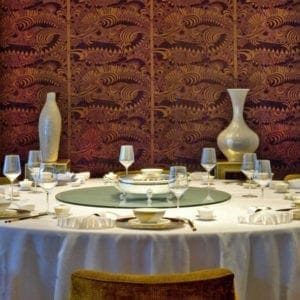 Auguste Escoffier was known as The King of the Chefs and the Chef of Kings. Today marks the 80th anniversary of his death. He died on February 12, 1935 – just short of his 90th birthday – and it is appropriate today to reflect on his many lasting contributions to the culinary industry.
Auguste Escoffier was known as The King of the Chefs and the Chef of Kings. Today marks the 80th anniversary of his death. He died on February 12, 1935 – just short of his 90th birthday – and it is appropriate today to reflect on his many lasting contributions to the culinary industry.
The French chef left his mark in so many ways in the industry. He invented about 10,000 recipes, created the kitchen frameworks we use today and truly started the celebrity chef phenomenon.
The first celebrity chef
Escoffier was sent off at just 13 years old to help at his uncle’s restaurant – Le Restaurant Francais in Nice. His break came when he was 19 and went to work at the Le Petit Moulin Rouge which was one of the finest restaurants in Paris at the time. He started as sous-chef but after three years became the head chef. It was here he began developing his passion for decadent dining experiences, ones that attracted the attention of royalty. Kaiser Wilhem II once said of him, “I am the emperor of Germany but you are the emperor of chefs.”
Impact on hotel the hotel dining experience
In 1890, Escoffier accepted an invitation to work at the Savoy Hotel in London along with his close colleague and friend, César Ritz. Escoffier recruited the cooks and Ritz looked after the hotel staff. They worked together to shake up the industry and created an unrivaled customer experience that allowed them to conquer London.
He followed Ritz when he opened his own hotel, the infamous Hotel Ritz in Paris. However, Escoffier eventually returned to London to work as the Executive Chef at the Carlton Hotel, where he stayed for more than 20 years.
At the Carlton, Escoffier truly transformed how a kitchen and restaurant operated. He saw the importance of looking outside the kitchen. He looked to improve service, appreciate wine and understand the importance of ambiance. He believed in the importance of the menu and felt that is should read like a poem and be evocative.
He transformed the culinary trade into a profession
He continuously strove to improve the stature, recognition, benefits and rewards for the industry. When he started out, being a chef was not a well-respected profession and at times looked down on. He made the art of being a cook respectable and famously said to all his staff, “When you go out, put on a hat, and a coat, and a tie and look like somebody”.
He also looked at working conditions. Before, it wasn’t uncommon for chefs to be drinking while cooking – and usually drunk. He calmed the kitchen down, made it more pleasant and even hired a doctor to create a healthy drink that could replace the alcohol his staff was used to having. All this helped lift the morale of the men, as for the first time they were being respected.
In 1928 he also helped create the “World Association of Chefs Societies” and became its first president.
But perhaps his greatest contribution to the industry was his codification of cooking in his book Le Guide Culinaire. He brought structure, discipline and organisation to the kitchen. He codified the recipes for the five main sauces and formatted the physical layout of the kitchen. He created the sections, the flow and the various roles still widely used today. He made it a professional and efficient environment. His kitchens were described as “sans une pluie de gifles” which translate to – without a shower of slaps. Before this, it was not uncommon for chefs to be duplicating each others tasks and for more work being created then needed to be. By unifying and streamlining kitchen operations, he could dish up over 500 plates of food on a dinner service.
Changes to cuisine itself
It was Escoffier who pioneered the concept that cuisine must adapt to the times – he said we must cook for the customer. He inspired Nouvelle Cuisine, as it was Escoffier who worked to simplify the art of cooking – getting rid of excessive garnishes, heavy sauces and over the top plating. He aimed to increase awareness abroad of French products and how to use them. In simplifying the food, he was also the first to simplify the menu. He reduced the number of courses served and introduced the first a la carte menu at the Carlton.
He wrote industry bibles
He has two books that are regarded as bibles by the industry including his first book Le Guide Culinaire, which has about 5000 recipes and garnish prep. One thing that set him apart from many of the time was he was the first to write it all down! The second book is Le Guide, which is a guide for the contemporary cook.
Longevity
Escoffier began his career at the age of 13, and, when he retired from the Carlton Hotel at the age of 75, he counted 62 years of active service – a span considered a record in the profession.



















